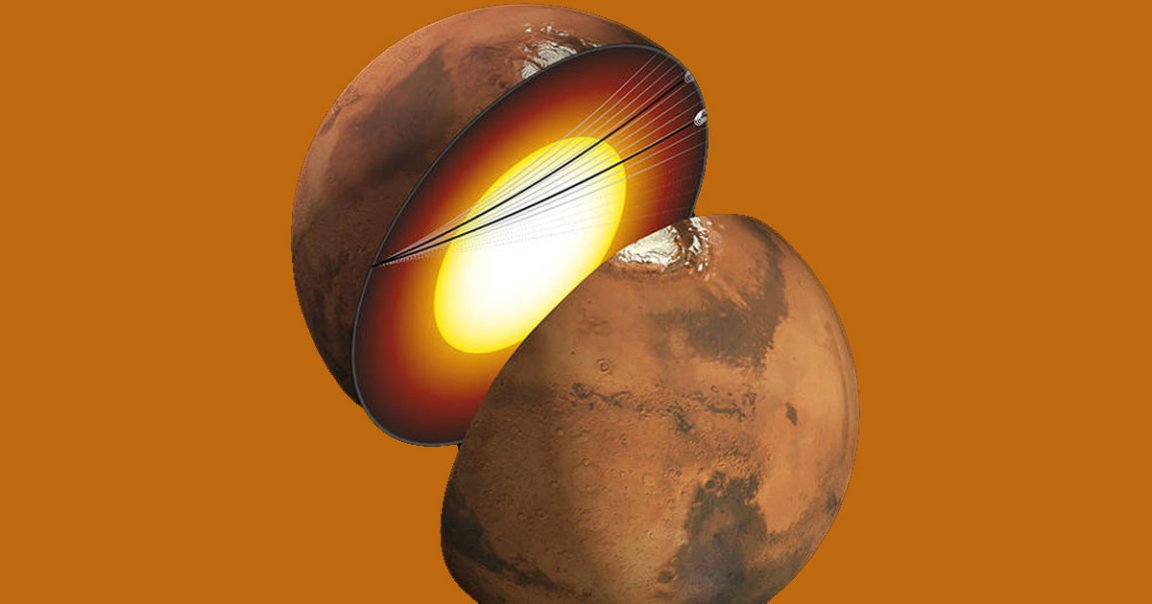
Radioactive, Radioactive
A team of researchers at ETH Zurich in Switzerland say they’ve figured out how thick the Martian crust is by analyzing data obtained by NASA’s Mars InSight lander.
The discovery led them to an interesting conclusion: the planet’s main source of heat, being produced deep in its interior, appears to be the result of radioactive elements like thorium and uranium decaying over time.
Though that might sound exotic, it actually means the interior of the Red Planet is surprisingly similar to our own Earth, which also partially relies on the heat from the decay of radioactive elements — in addition to the leftover energy from when it formed about 4.5 billion years ago — to keep its core hellishly warm.
Thicc Crust
The team analyzed data obtained by InSight’s seismometer during the strongest Marsquake the lander detected during its entire mission.
The seismic waves were strong enough to circle Mars three times, according to the team led by Doyeon Kim, a seismologist at the Institute of Geophysics at ETH Zurich.
As detailed in their new paper published in the journal Geophysical Research Letters, the team used the data from that epic quake to determine the thickness of the Martian crust, which it turns out averages between 26 and 35 miles.
“This means that the Martian crust is much thicker than that of the Earth or the Moon,” said Kim in the statement. Smaller planetary bodies tend to have a thicker crust than larger ones.
The team also found that the density of the Red Planet’s crust in the northern lowlands and southern highlands were similar, a “very exciting” finding that “allows an end to a long-standing scientific discussion on the origin and structure of the Martian crust,” according to Kim.
Perhaps most excitingly, this analysis also provides an explanation for how the planet has been able to generate its heat over billions of years.
The researchers found that at least half of these heat-producing radioactive elements were found in the Martian crust, which could account for “local melt zones” in the planet’s interior — a striking clue, perhaps, in our quest to unravel the geological mysteries of the Red Planet.
More on Mars: NASA Mars Rover Appears to Have Found Remnants of Ancient Raging River